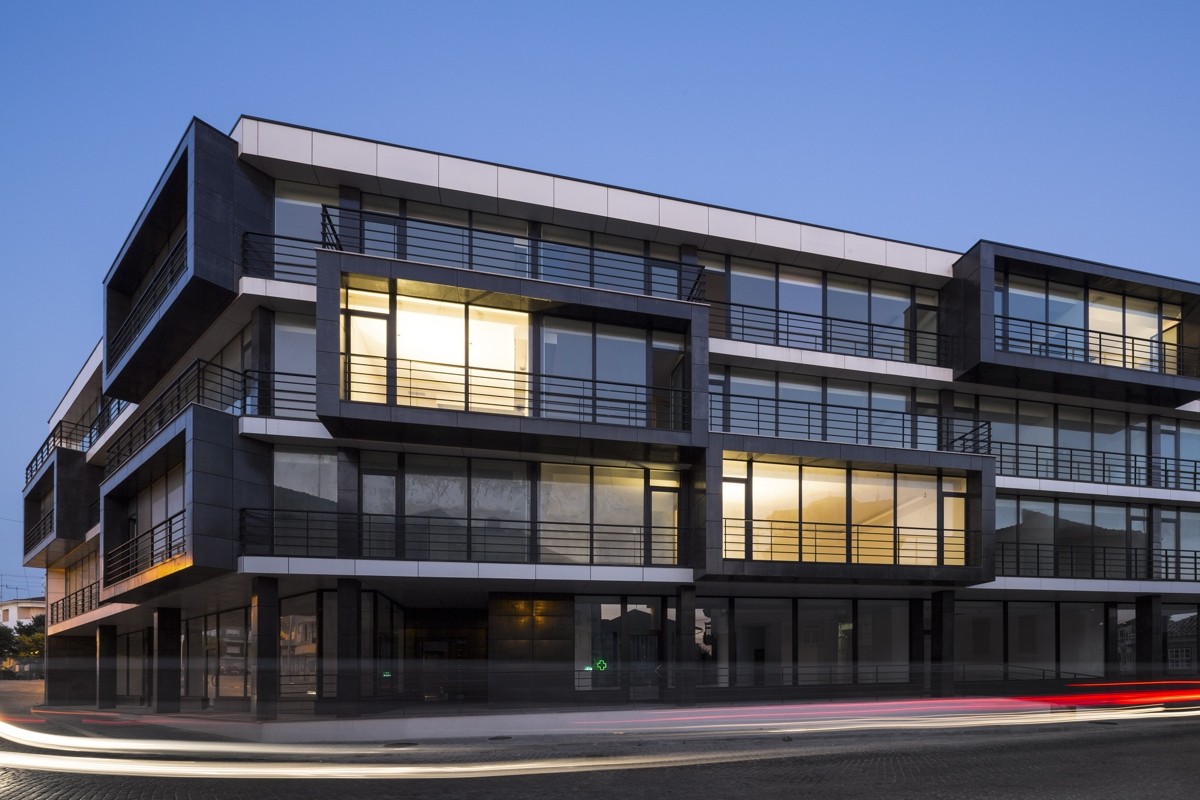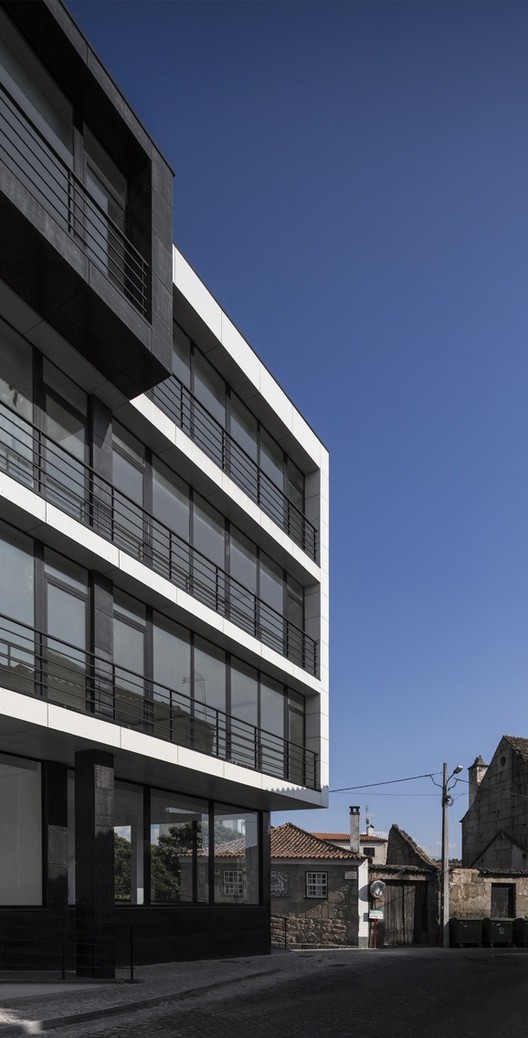
-
Architects: Marco Martins, Nuno Ladeiro
- Year: 2013
-
Photographs:Fernando Guerra I FG+SG

Text description provided by the architects. The architecture project by Nuno Ladeiro and Marco Martins, is inserted in the urban core of Vila Nova de Tazem, a small country town near Serra da Estrela, in the north of Portugal, which is characterized by a consolidated urban fabric, whose predominant characteristics are buildings of 2 and 3 floors for residential. Configuration, boundaries of the land and built environment, strongly influence the shape of the building and deployment.

Architecture is based mainly on the optimization of commercial and residential space with 15 apartments of various types, T1, T2, T3, served by three vertical communication cores completely independent. The functional organization especially favors the social area of the apartments, not only in terms of area but also as regards the views of Serra da Estrela. Therefore, it was established a direct relationship between rooms and kitchens, creating a more intimate circulation zone closer to the rooms.

From a formal point of view, the project took as its starting point the work of architect Ludwig Mies van der Rohe and, in particular, an almost unknown work, the "memorial to the Spartacist leaders Karl Liebknecht and Rosa Luxemburg, commissioned by Eduard Fuchs, president of the German Communist Party in Germany" opened on June 13, 1926 and later destroyed by the Nazi regime.

Since this is clearly a modern architectural option, the authors understand that the constructivist-inspired elementary geometry and the consequences of rationality, associated with aspects of simple logic, are not only manifestations of a bygone era. The use of the geometric cube and the parallelepiped has a universality that continues to "contaminate" the architecture of the XXI century. Therefore, modern rationalism, evident in the facades of this proposal, corresponds in part to a more meaningful calculation of constructivist geometric symbols that in fact are part of modern architecture which is not yet exhausted.

The spirit of the place, the black stone, the white of the snow and the desire to revive the memory of modern architecture in Portugal were crucial to the choices made.
































